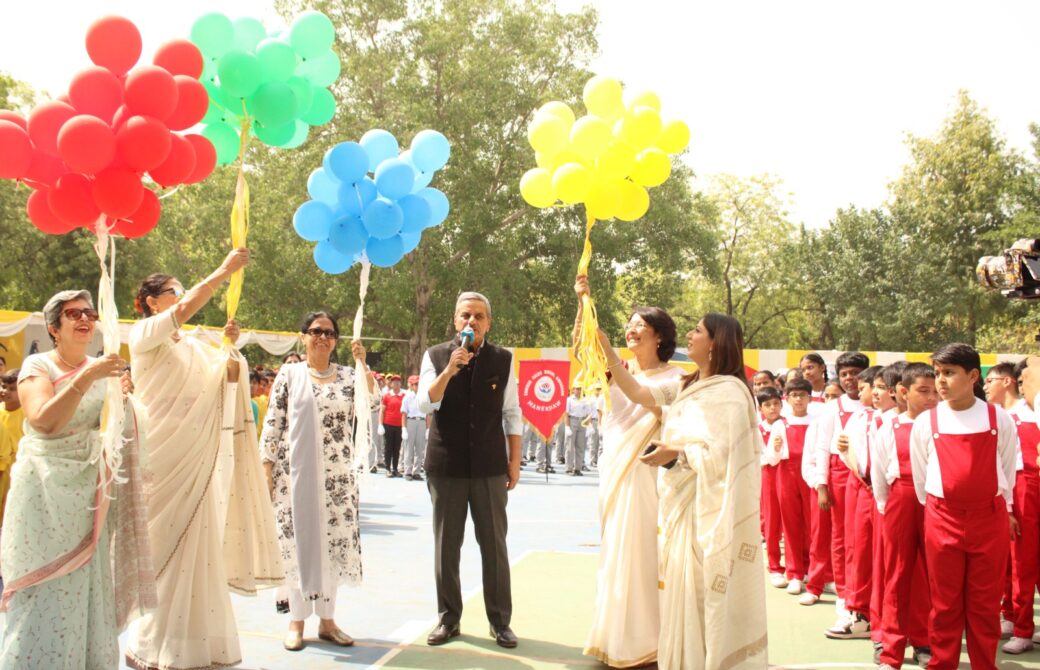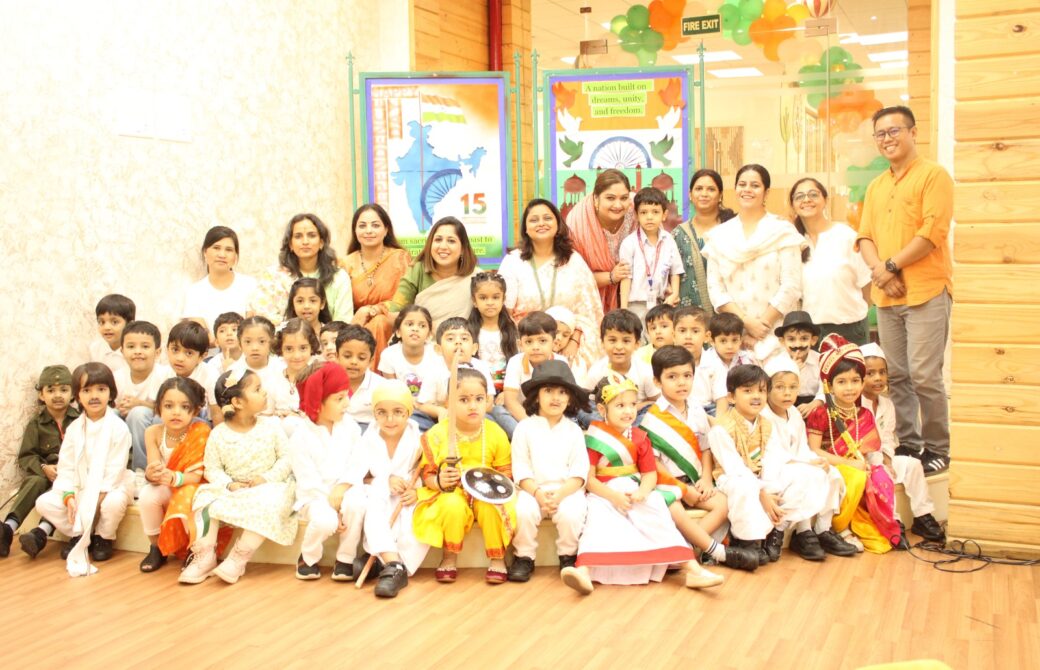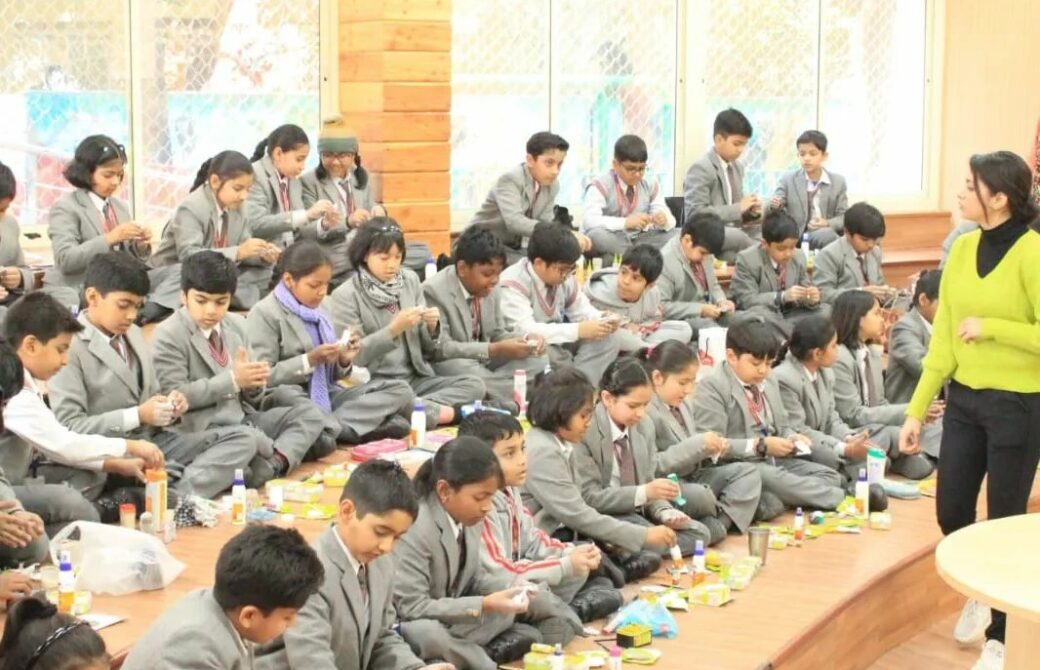Introduction:
Education in the 21st century is rapidly evolving from a purely academic focus to a more integrated, well-rounded approach. At Summer Fields School Gurugram, the Best Schools in Gurugram are at the forefront of this transformation, embracing holistic education models that prioritize not only academic excellence but also emotional intelligence, physical fitness, creativity, and ethical values.
This shift is not just a trend—it’s a necessary evolution to prepare students for the demands of a dynamic and interconnected world. Let’s explore how these leading campuses are redefining learning through holistic education.
About Us:
Our educational philosophy goes beyond textbooks, embracing a holistic model that nurtures intellectual, emotional, and physical growth. While rooted in the national curriculum, we integrate arts, sports, technology, and life skills into daily learning. Students engage in extracurricular activities like music, dance, theatre, athletics, and environmental clubs, helping them discover passions and develop discipline. Our school calendar is filled with engaging events such as cultural festivals, literary weeks, art exhibitions, and community outreach programs that connect classroom learning to real-world experiences. Teachers mentor students individually, ensuring balance between academic excellence and personal development. This commitment to whole-child education fosters resilience, empathy, and leadership—qualities essential for success in the modern world. By blending rigorous academics with creative expression and social engagement, we create an environment where every child can thrive holistically, emerging as a confident, capable, and compassionate individual.
-
Understanding Holistic Education
Holistic education goes beyond textbook knowledge, aiming to nurture every aspect of a student’s personality. It combines intellectual, emotional, social, physical, artistic, creative, and spiritual development into the learning experience.
In national curriculum schools following CBSE guidelines, this means integrating traditional academics with activities and programs that develop life skills, creativity, and social responsibility.
-
Why the Shift to Holistic Learning Matters
In earlier decades, the success of an education system was measured solely by exam results. However, global studies now show that students who engage in balanced learning—blending academics with extracurricular and life skills—are more adaptable, emotionally intelligent, and better equipped for real-world challenges.
The schools are recognizing this, ensuring that classrooms are no longer confined to academic drills but function as spaces for creativity, collaboration, and self-discovery.
-
Core Principles of Holistic Education Models
The leading institutions base their educational approach on key principles:
- Student-Centered Learning – Focusing on individual strengths, weaknesses, and interests.
- Integration of Multiple Disciplines – Linking concepts across science, literature, arts, and sports.
- Experiential Learning – Encouraging hands-on projects and fieldwork.
- Ethical and Value-Based Education – Instilling empathy, respect, and responsibility.
- Balanced Curriculum – Ensuring physical education, arts, and social activities are as important as academic subjects.
-
Academic Excellence within Holistic Models
Holistic education doesn’t compromise academic rigor—it enhances it. By engaging students in creative problem-solving, project-based learning, and cross-disciplinary studies, these campuses make core subjects more engaging.
For example, mathematics might be taught through coding challenges, history through role-play debates, and science through environmental field projects.
-
Emotional and Social Development
Top-performing CBSE institutions recognize that emotional well-being is as critical as academic achievement. They integrate:
- Life Skills Workshops – Covering communication, teamwork, and decision-making.
- Mindfulness and Meditation Sessions – Helping students manage stress and improve focus.
- Peer Mentoring Programs – Encouraging older students to support younger peers.
- Social Responsibility Initiatives – Involving students in community service and awareness campaigns.
-
Physical Fitness and Sports Integration
Sports and physical activities are not treated as optional extras—they are embedded into the daily schedule. Facilities often include:
- Multi-sport fields for cricket, football, and athletics.
- Indoor arenas for badminton, table tennis, and gymnastics.
- Specialized coaching programs for budding athletes.
This focus on physical development fosters discipline, resilience, and teamwork—qualities essential for success in both academics and life.
-
Creative and Performing Arts
From music and dance to theater and visual arts, creative subjects play a vital role in holistic learning. These activities:
- Improve self-expression and confidence.
- Encourage innovation and lateral thinking.
- Provide a healthy outlet for stress.
Many schools host annual cultural fests, art exhibitions, and musical performances, offering students real platforms to showcase their talent.
-
Environmental and Sustainability Education
The schools are leading the way in environmental stewardship. Initiatives include:
- Organic gardening projects.
- Waste segregation and recycling drives.
- Renewable energy adoption in campus infrastructure.
- Student-led awareness campaigns on climate change.
These activities teach responsibility toward the planet while reinforcing science and social studies concepts.
-
Technology as an Enabler in Holistic Education
Technology integration has transformed the way holistic education is delivered. Campuses now feature:
- Smart Classrooms – Equipped with interactive boards and multimedia content.
- E-Learning Platforms – Allowing students to access resources beyond the classroom.
- AI-Powered Assessments – Offering personalized feedback and learning pathways.
- STEM Labs – Encouraging innovation in science, technology, engineering, and mathematics.
-
Global Exposure and Cultural Exchange
Holistic models also prepare students for a globalized world. Many institutions arrange:
- International student exchange programs.
- Virtual collaborations with overseas schools.
- Global curriculum modules alongside CBSE standards.
- Multilingual clubs to foster cross-cultural communication.
-
Value Education and Ethical Development
Academic intelligence alone doesn’t guarantee success—values and ethics shape a responsible citizen. Leading institutions embed moral education into lessons through:
- Story-based learning in early grades.
- Discussions on current affairs from an ethical perspective.
- Debates and public speaking events focused on societal issues.
- Role-model mentorship from faculty.
-
The Role of Teachers in Holistic Models
Teachers in these campuses are more than subject experts—they are mentors, facilitators, and motivators. Continuous professional development ensures they can balance curriculum demands with innovative teaching strategies.
They also play a pivotal role in recognizing individual potential and guiding students toward academic and personal growth.
-
Parental Involvement in Holistic Learning
Strong home-school partnerships are crucial. Parents are engaged through:
- Regular interactive sessions and workshops.
- Participation in school events and cultural activities.
- Collaborative goal-setting for student progress.
- Volunteer opportunities in community outreach programs.
-
Measuring Success Beyond Exams
Unlike traditional systems that rely solely on test scores, holistic education models measure success through:
- Portfolio Assessments – Showcasing student work over time.
- Peer and Self-Evaluations – Building reflective thinking.
- Project Outcomes – Evaluating research, creativity, and problem-solving.
- Community Impact – Recognizing contributions to social initiatives.
-
Overcoming Challenges in Holistic Education
Implementing a well-rounded model requires resources, teacher training, and careful curriculum design. Top-ranking schools address these by:
- Investing in infrastructure and facilities.
- Offering ongoing teacher development programs.
- Building partnerships with educational technology providers.
- Phasing new initiatives for smooth adaptation.
-
Preparing Students for the Future
Holistic education equips students with:
- Critical Thinking Skills – To analyze and solve complex problems.
- Emotional Intelligence – To navigate personal and professional relationships.
- Cultural Competence – To work effectively in diverse teams.
- Leadership Qualities – To inspire and guide others.
This comprehensive development ensures they are ready for higher education, global careers, and social responsibilities.
-
Real-Life Success Stories
Alumni from such holistic learning environments often excel not only in academics but also in entrepreneurship, arts, sports, and community leadership. These stories reinforce the value of an education system that nurtures the whole individual.
Conclusion:
The schools are proving that a balanced education model is the way forward. At Summer Fields School Gurugram, the Top Schools in Gurugram where by blending academic rigor with creativity, emotional well-being, environmental awareness, and physical development, they create well-rounded, confident individuals ready to lead in a complex world.
Holistic education is not just about producing good students—it’s about shaping responsible, capable, and compassionate global citizens.
FAQs:
Q1. What is meant by holistic education in a national curriculum setting?
Holistic education focuses on nurturing intellectual, emotional, physical, and creative skills, not just academic scores.
Q2. How do schools integrate arts and sports into academics?
They schedule co-curricular activities like dance, music, athletics, and art alongside academic lessons to encourage well-rounded growth.
Q3. Why is emotional well-being part of holistic education?
Because emotional intelligence is as important as academic knowledge—it helps students handle challenges and relationships better.
Q4. What types of school events support holistic growth?
Cultural fests, science exhibitions, talent showcases, and literary weeks encourage creative expression and team spirit.
Q5. Does holistic learning improve academic results?
Yes, balanced development often leads to better concentration, problem-solving skills, and overall academic performance.









